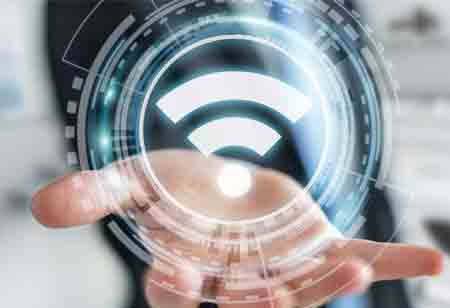THANK YOU FOR SUBSCRIBING
Top Wireless Technology Trends for 2021
Wireless technology has advanced dramatically over the years. New and emerging technologies such as drones, robots, self-driving vehicles

By
Apac CIOOutlook | Monday, October 04, 2021
Stay ahead of the industry with exclusive feature stories on the top companies, expert insights and the latest news delivered straight to your inbox. Subscribe today.
V2X wireless systems will eventually be legal requirements for the automobile industry, but V2X systems will require a 5G network to get the most out of them.
Fremont, CA: Wireless technology has advanced dramatically over the years. New and emerging technologies such as drones, robots, self-driving vehicles, and new medical devices are emerging, necessitating the development of the Internet of Things (IoT), which will serve as the foundation for the advancement of these technologies.
This article will look at some Wireless technology trends that made the top ten and will change the way people and organizations communicate in the future. These trends may emerge as a result of organizations' need to be more responsive to market and customer demands, data security concerns, the Internet of things, and so on.
Top Wireless Technology Trends
Vehicle-to-Everything (V2X) Wireless
Both traditional car driving and self-driving cars require communication with one another and with road infrastructure. V2X wireless systems will enable this integration. V2X wireless systems will offer a slew of new services, including safety features, navigation assistance, and infotainment.
V2X wireless systems will eventually be legal requirements for the automobile industry, but V2X systems will require a 5G network to get the most out of them.
Low Power Wide-Area (LPWA) Networks
Low-bandwidth connectivity for IoT applications in a more power-efficient mode to sustain longer battery life. Low power wide area networks, such as Narrowband IoT (NB-IoT), long term evolution for machines (LTE-M), Sigfox, and LoRa, cover large areas, such as large cities or even entire countries. Because modules are relatively inexpensive, IoT manufacturers can enable small, low-cost, battery-powered devices such as sensors and trackers.
Long Range Wireless Power
The limitations in terms of distance for wireless devices remain slightly better than cable connectivity, but new technologies can charge devices at ranges of up to one meter or over a table or desk area. Long-distance wireless would eventually eliminate the need for power cables from laptops, display monitors, kitchen appliances, as well as home utility systems such as vacuum cleaners.
Wireless devices still have distance limitations that are slightly better than cable connectivity, but new technologies can charge devices at ranges of up to one meter or over a table or desk area. Long-distance wireless would eventually eliminate the need for power cables from laptops, kitchen appliances, display monitors, home utility systems such as vacuum cleaners, and so on.





